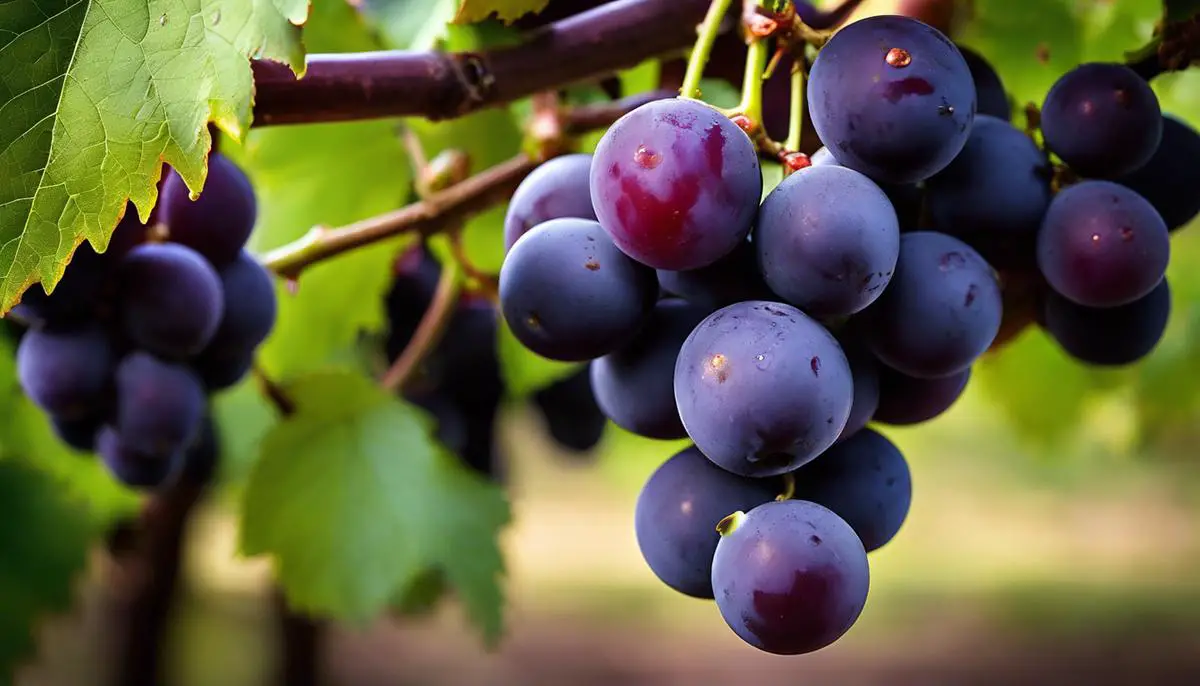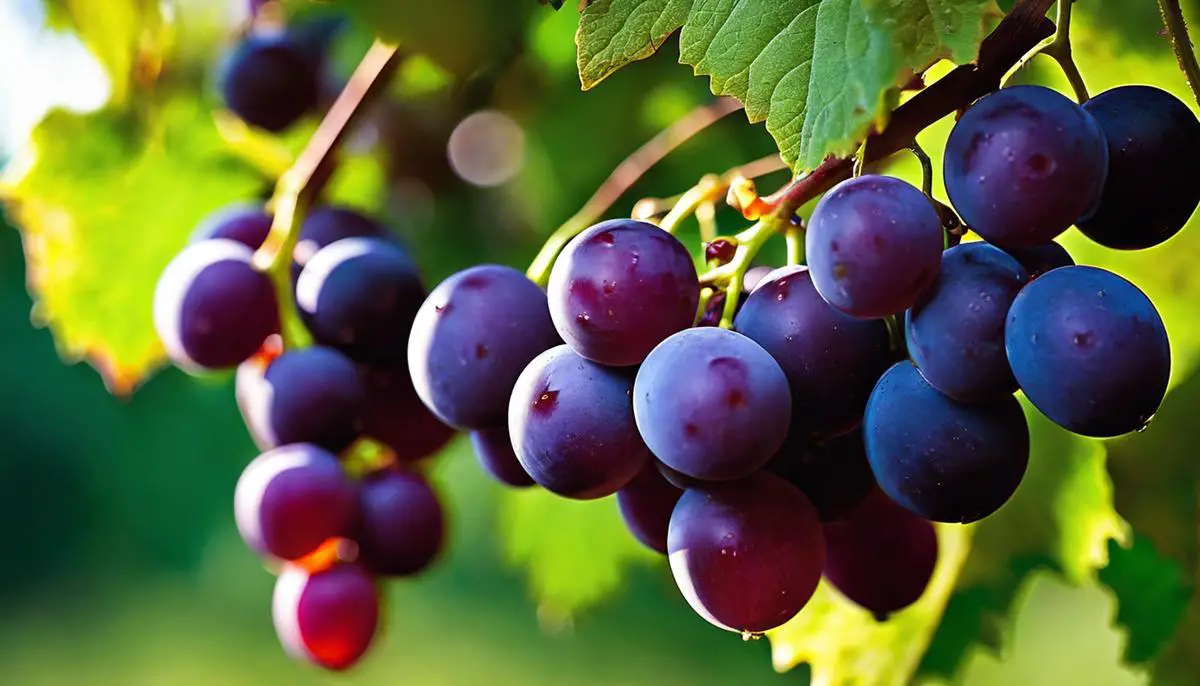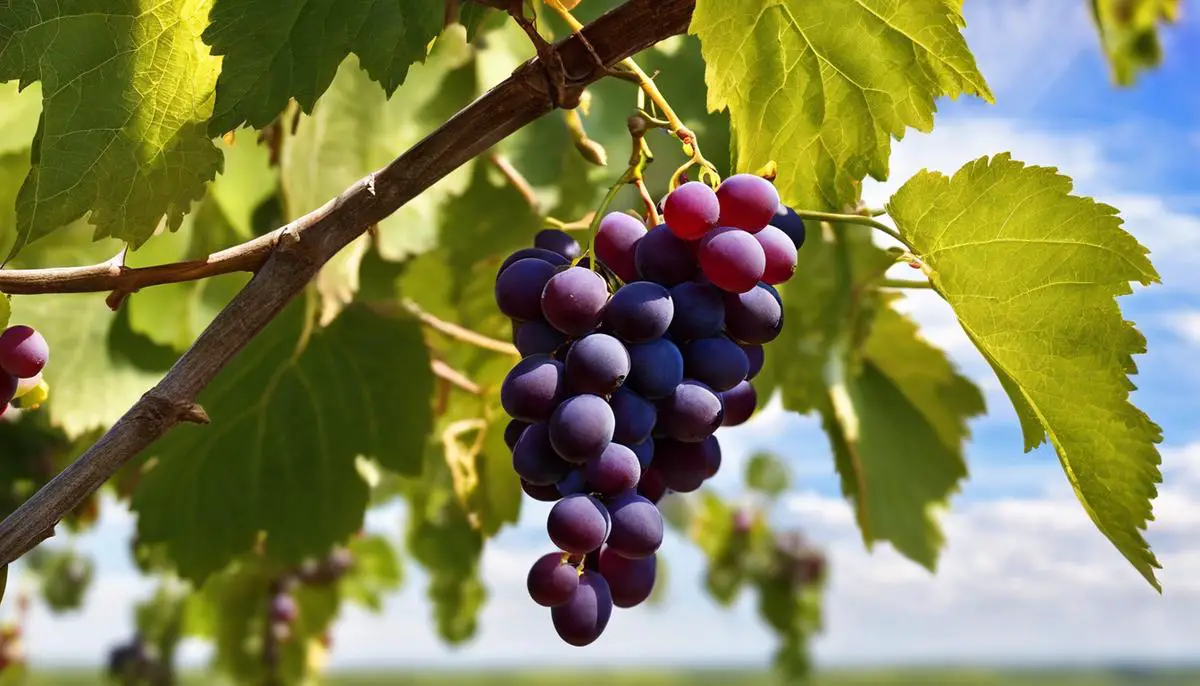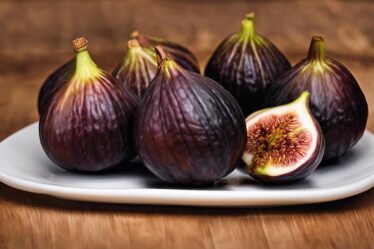
Muscadine Grapes, an exquisite variety of fruit that holds a unique place in the world of viticulture, carry a rich history, distinctive characteristics, and impressive health value. This in-depth exploration will unlock the roots of muscadine grapes, stretching back over centuries, and their journey into our present. We dive deeply into the heart of the vineyard, proffering a holistic understanding of this extraordinary grape — its cultivation, ideal growing conditions, and the artistry of its harvest. But beyond the vine and fruit, we’ll travel into kitchens, exploring diverse culinary plays on muscadine grapes, and engage in dynamic networks of hobbyists who have made these round fruits into a shared joy and passion.
Understanding Muscadine Grapes
Mastering the Muse: Muscadine Grapes, and Possible Prowess in Amateur Viticulture
Muscadine grapes (Vitis rotundifolia) hold fascinating allure for beginners and seasoned viticulturists alike. Managing to be simultaneously enigmatic and inviting, the muscadine grapes are indigenous to the southeastern United States. They’re an ideal starting point for anyone exploring backyard vineyards or even just the rich science of grape cultivation.
Known for a distinct bold, fruity flavor, muscadines have a robust, almost musky aroma. They’re farther removed from their vineyard grape cousins (Vitis vinifera) which produce most common wines. This native grape variety comes in bronze, black, and purple hues, adding an aesthetic pop and turpitude to any garden. Furthermore, muscadines have thicker skins compared to traditional grapes, giving them a hearty and satisfying ‘pop.’
An intrigue of muscadines lies in their heartiness. Whereas other grape varieties might require strict temperature control and meticulous care, muscadines are stubborn survivors. They are well-adapted to hot, humid climates, making them excellent candidates for southern vineyards. These robust vines resist many pests and diseases most common to grapes, essentially doing most of the hard vineyard work for you.
Muscadines also bravely tread roads uncommon to most grapes. Wine made from muscadines walks a delicate balance between sweet and tart, due to their high sugar content and natural acidity. They are often used in making homemade jellies and desserts or enjoyed straight off the vine, making for a versatile grape choice.
The world of muscadines extends beyond taste buds and aesthetic appeal. The explorers of the grape world would be thrilled to know that muscadine grapes are often used in research due to their high concentrations of resveratrol, an antioxidant. This makes the muscadines not just a viticulturist’s hobby but a scientific realm worth exploring.
So whether you’re a want-to-be winemaker, a weekend gardener, or simply someone fascinated with the idea of growing your own fruit, the muscadine grape lends itself beautifully. It’s an accessible intrigue, a hearty survivor, a delight for the taste buds, and an endless exploration vessel for the curious mind. With a backdrop of scientific intrigue and a canvas of taste and color, muscadines truly make for fascinating viticultural exploration. Dive in, and happy grape growing!

Growing Muscadine Grapes
Success in growing muscadine grapes in a home vineyard truly hovers around understanding the unique characteristics and needs of this fascinating fruit. Countless enthusiasts have found joy in nurturing muscadine vines, utilizing savvy cultivation techniques to breed succulent, healthy fruits. Let’s delve into the essential facets of successfully growing these grapes right in the comfort of your backyard!
Since adaptable by nature, muscadine grapes flourish in a broad range of soil conditions. However, ensuring proper soil pH is paramount. A slightly acidic soil with a pH between 5.5 and 6.5 is ideal for fostering muscadine roots. Supplementing your soil with organic matter or compost can significantly improve its fertility and drainage ability, presenting a nurturing environment for your grapes.
It’s worth noting that muscadines are quite partial to sunlight. They require a minimum of six hours of full sun daily to generate sufficient energy for growth and fruit production. Therefore, selecting a sun-drenched location in your home vineyard can solicit a leap in yield.
There is no denying that proper spacing plays an integral role in harvesting a successful muscadine crop. These grapevines relish room to grow and should be spaced 12 to 20 feet apart per row. This ensures efficient air circulation and reduces susceptibility to diseases.
Muscadines are not particularly fussy when it comes to watering routines. Keep in mind that their water requirements are highest during bearing season, particularly during dry spells. A good soaking at least once a week is recommended, especially in the absence of rainfall during this period.
Pruning is an essential activity when caring for muscadine vines. Late winter or early spring is typically the optimal time for this task, just before the buds break. Pruning is not only necessary to shape the vine but also helps to manage the crop load and maximize the quality of the fruit.
Patience indeed is a virtue when growing muscadine grapes. The sagacious grape grower understands that these vines usually start to bear after three years from planting and will only reach peak production after five or six years.
Above all, incorporating a routine pest and disease management strategy can tip the scales in favor of a thriving, productive muscadine vineyard. Regular scouting for common pests like the grape root borer, and fungal diseases such as black rot, can aid in early detection and prompt intervention.
Growing muscadine grapes successfully is a labor of love, requiring dedication and a familiarity with the unique needs of this particular vine variety. With a touch of patience, an understanding of their preferences, and a well-attended cultivation routine, a thriving harvest of luscious, sun-ripened muscadines may be right within your reach. Experience the delightful charm of these rich berries that turn your home vineyard into a garden of plenty.

Harvesting and Preservation
Knowing when and how to harvest muscadine grapes is a crucial skill developed overtime, and can contribute significantly to one’s enjoyment of this hobby. The right time to pick these grapes is typically late summer to early fall, depending on the variety and your geographical location. Timing, as they say, is everything.
A good indicator that muscadines are ready for harvesting is the color. Muscadines will change from a green hue to a dark purple, bronze, or even black as they mature. Another hint lies in the taste. Unlike many other grape types, muscadines do not continue to sweeten after picking, so tasting a grape from the vine is a practical method to determine the optimal harvest time. When they have reached peak sweetness, that’s the sign they’re ready.
Learning how to pick them properly is equally vital. Muscadine grapes ripen unevenly, so a hand-picking method is recommended. This will help you preserve the vine and ensure only ripe grapes are harvested, reducing waste.
Muscadines don’t stay fresh after picking for a very long time. If the grapes cannot be consumed or processed immediately after picking, refrigeration is the best way to prolong their freshness, holding them for up to a week. Ensure that the harvested grapes are dry before refrigeration as dampness can increase the risk of mold development.
Preserving these grapes can take several forms. Freezing is a popular method. To freeze muscadines, wash them and dry thoroughly, then place on a baking sheet in a single layer. Freeze them until solid. Once frozen, transfer to a resealable bag and return to the freezer where they can stay good for over a year.
Alternatively, you might consider making muscadine jam or jelly, which can extend the joy of harvest season. Home canned products can be stored for at least 12 months. Another flavorful option you might enjoy is muscadine wine or muscadine grape juice. Both require specific equipment and further skills, but the result sure makes all the effort worthwhile.
As a grape enthusiast, it’s important to remember that quality muscadine grapes start with high-quality care. Their unique taste and adaptability make them well worth the effort. Happy harvesting and preserving!

Uses of Muscadine Grapes
Broadening Your Culinary Palette with Versatile Muscadine Grapes
Have we hooked you yet with the marvelous muscadine? What amazes us about this native American fruit isn’t just its resilience and unique genetic makeup, but also its unexpected versatility in the kitchen. Here lies the hidden gem of the muscadine world, a realm brimming with savory and sweet possibilities awaiting to tease your palate.
Adventurous home cooks would find muscadines a fascinating addition to their culinary repertoire. Imagine muscadine and prosciutto pizza with a layer of fresh arugula as a summer snack, or smoked duck breast with muscadine sauce for a delectable dinner. The rather assertive, sweet and tangy flavor profile of muscadines offers a delightful contrast to both robust and delicate dishes.
As a tip of the day, try roasting a handful of muscadines with a drizzle of olive oil and a sprinkle of salt. Roasting helps draw out the deep, fruity flavor of the muscadines, making them perfect to toss into salads, pair with cheese, or simply enjoy as a side.
While most people use muscadines for wine and jelly, there’s an unsung hero that deserves a spotlight – muscadine syrup. This is a culinary gold in the Southern kitchens and its uses are boundless. Use it to glaze ham, pour over pancakes, or stir into cocktails. It brings a lush, fruity dimension to whatever it touches.
Given the health benefits nestled within these little orbs, incorporating them into everyday foods is a brilliant choice. One refreshing option is a muscadine smoothie. Combined with banana, yogurt, and a dash of honey, the smoothie bursts with comforting flavors and wholesome goodness.
For the baking enthusiasts, the ripe muscadines can be used to make stunning desserts. From old-timey muscadine pies to elegant muscadine cake with cream cheese frosting, these creations are guaranteed to impress.
Furthermore, did you know that muscadine grapes can be pickled as well? Yes, pickling them in a jar of vinegar with a blend of spices brings out a new level of tartness and crispness, making them a great accompaniment for your cheese plates.
Finally, could anything could beat homemade muscadine ice cream on a hot summer day? As the ice cream melts in your mouth, it leaves behind a trail of muscadine magic, transporting you directly to a vineyard bursting with sweet, juicy fruits.
The muscadine grape, a humble fruit that’s awash with rich, intricate flavors, is truly an explorer’s dream. Its versatility invites innovation and experimentation, whether you’re an amateur cook or a seasoned chef. Take this fruitful journey armed with the knowledge about this jewel of the South, dare to experiment, and let the taste adventures with muscadines begin!

Building a Community Around Muscadines
Connecting with a larger community passionate about muscadine grapes
Having developed an understanding of what it is like to grow, harvest, and even use muscadine grapes in various delicious recipes, one may be wondering, how does one connect with others who share this passion? Especially considering muscadine grapes are not as mainstream as your typical vineyard grapes, finding a community can seem like a daunting task. It’s not quite a piece of cake, but it can be quite rewarding once you find your people.
Step One: Online Forums and Communities
In the digital age, every niche has an online meeting place where enthusiasts gather, exchange ideas, ask questions, and support each other. Reddit, for one, has various subreddits dedicated to viticulture and home gardening. A quick search for ‘muscadine grapes’ yields multiple posts and discussions from individuals across the globe. Joining these communities can be a great starting point, allowing you to digitally mingle with people who are just as enthusiastic about this robust grape variety.
Step Two: Local Gardening and Viticulture Clubs
While online communities are a great resource, there’s nothing quite like meeting fellow enthusiasts face-to-face. Look for local gardening or viticulture clubs in your area. Even if they’re not specifically focused on muscadine grapes, remember that the muscadine vine is a hearty, adaptable plant that sparks interest among gardeners and winemakers alike.
Step Three: Attend Muscadine Festivals
Yes, you read that correctly. Muscadine festivals are a thing, especially in the southern states where muscadine grapes are native. These festivals typically feature grape picking, tastings, winemaking demonstrations, and even cooking classes using muscadines. Notable festivals include the Annual Muscadine Festival in Sweetwater, Tennessee, and the Paulk Vineyards Muscadine Festival in Georgia.
Step Four: Enroll in a Viticulture Course
If you’re looking to dive deeper into the world of muscadine grapes, consider enrolling in a viticulture course. This gives you the chance to learn from experts, while also connecting with fellow students who share your interest. Some universities, like North Carolina State University, even offer online coursework in viticulture and enology.
Step Five: Create Your Own Community
Having gathered substantial knowledge about muscadine grapes, you may be well-positioned to create your own community. This could be a blog, a YouTube channel, an online forum, or even a local club. Not only do these avenues allow you to share your knowledge, but they also enable you to meet other like-minded individuals and grow the muscadine grape community.
There might not be an established roadmap to connecting with individuals passionate about muscadine grapes, but these steps should set you on the right path. It may take time, but immersing yourself in these communities will surely deepen your love and knowledge for this distinctive grape variety. So go forth and connect, for the world of muscadine grapes is a wondrous one worth sharing.

So, whether you are an aspiring gardener wanting to grow these magical fruits, a home cook looking to satiate your kitchen experiments, or an enthusiast longing to connect with other muscadine lovers, the vast landscape of knowledge and interaction offers a space for each of us. Keeping the love for muscadine grapes aflame ought to be a collective endeavor. With shared knowledge and experiences, we can indeed ensure these extraordinary fruits continue to inspire generations, enhancing our health and enriching our taste buds while wrapping around the warmth of community.



